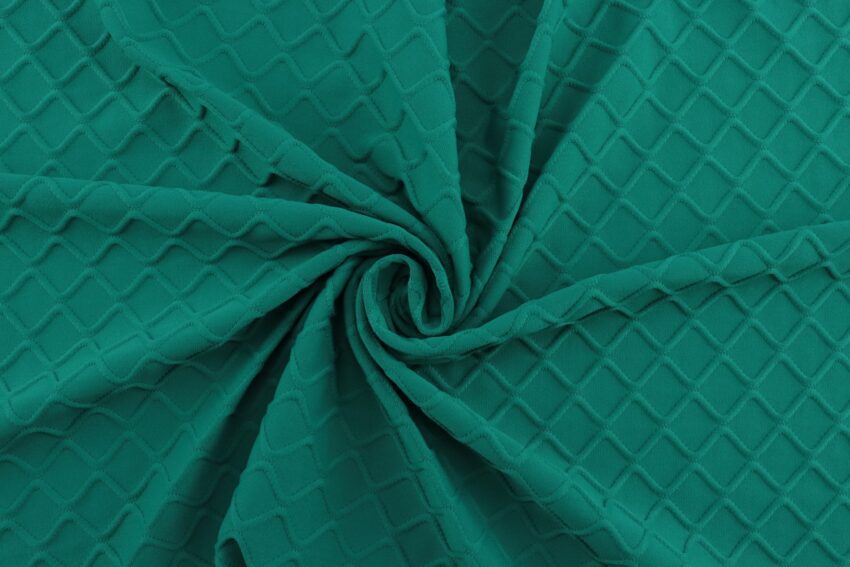Spandex is a popular textile that is used in various industries. From form-fitting swimwear to snug athletic wear, spandex is a valuable material that offers numerous benefits.
Its versatility makes it a preferred fabric for consumers, manufacturers, and designers. However, there are some things to remember when using this fabric.
Stretchability
Spandex is a type of fiber that can be stretched up to 700 percent – 4 to 7 times the fabric’s standard length before it breaks. This remarkable stretching ability makes the best spandex fabric very popular for making form-fitting garments that require a high degree of flexibility.
The fabric’s stretchability is a direct result of its chemical composition. The fibers are composed of polymer strands that have a flexible segmented structure. The amorphous segments of these polymers have a random molecular structure and intermingle to make the fiber soft and flexible—the rigid segments bond with each other to give the fiber structure and rigidity. When a force is applied to stretch the fiber, these rigid segments break, and the amorphous segments straighten out and lengthen to create the elastic property of the fiber.
When the force is removed, the amorphous segments recoil and return to their relaxed state and the elastane fiber returns to its original shape. This elastic quality makes the fabric very comfortable to wear.
Since the fabric is made of a synthetic material, it has no organic components and does not come from natural resources. This fact, combined with its highly desirable stretchability, makes the fiber appealing to consumers concerned about its impact on our fast-deteriorating environment.
Durability
Spandex is a durable fiber, though it may seem less so when worn in tight or form-fitting clothing. It can be woven into many fabrics, making it a popular choice for sportswear, dance clothes, yoga pants, and jeans.
The fabric is very resistant to abrasion and can be machine-washed and dry-cleaned. It can also be dyed with the same dyes and finishing agents used for natural, organic, and synthetic fabrics. However, it has a low heat resistance, so following washing and ironing instructions is important.
It is very hygroscopic, which traps moisture, sweat and bad odor close to the skin. This can cause rashes, irritation, and itching in some people. It can also be a respiratory irritant for those with breathing difficulties or allergies to chemicals involved in manufacturing the fiber.
Comfort
Spandex fabric is made of a synthetic material that combines a variety of chemicals. Some of these substances hurt the environment, but others are more benign. This type of fabric is also not as good for the skin as natural fibers, and it can cause rashes, chafing, and other unpleasant conditions.
In addition, the hygroscopic properties of spandex can trap sweat and odor near the body. This is one reason why spandex clothing is not worn in sweat-inducing activities like exercising. In addition, the material may develop unpleasant odors and can be easily stained. Moreover, white color garments made from spandex can turn yellow after prolonged use.
Despite these shortcomings, the versatility of spandex makes it an excellent fabric for activewear and other forms of clothing. Inkspire reports that pop singer Madonna started a fashion trend in the ’80s by wearing innerwear as outerwear. This was a precursor to the wide use of spandex in leggings.
Elastane (also known as spandex) is a stretchy artificial polyurethane fiber. It is usually used in combination with other fibers to create stretchy fabrics. In addition to being able to withstand high levels of stretching, elastane is also strong and abrasion-resistant. It can be used bare or covered in woven fabrics and is usually blended with cotton, silk, or nylon.
Style
Spandex fabric is versatile enough to be woven into garments for any consumer or industrial use in which elasticity is needed. Pure spandex is used for incredibly stretchy and form-fitting clothing, but it’s more common to incorporate this fiber into other textiles.
For instance, it is often blended with polyester or cotton for the “skin layer” of stretchy fabrics like yoga pants and t-shirts. It is also used to make composite yarn, which mixes spandex with other types of fibers for a blend that has both the stretchiness and strength of spandex.
Another way in which spandex is used is to add a stretchy component to other materials, such as leather and rubber. This is especially helpful for products that require a high degree of flexibility, such as athletic shoes and gloves. Spandex also offers some durability to these materials, which is important when protecting the wearer’s skin against abrasions and snags.
The versatility of spandex makes it a popular choice for many different types of clothing. However, the fabric has its drawbacks. It is made from petroleum, a non-renewable resource that releases greenhouse gases into the atmosphere and takes a toll on the environment. Fortunately, newer materials are emerging that reduce the environmental impact of these clothing and fabric fibers.


